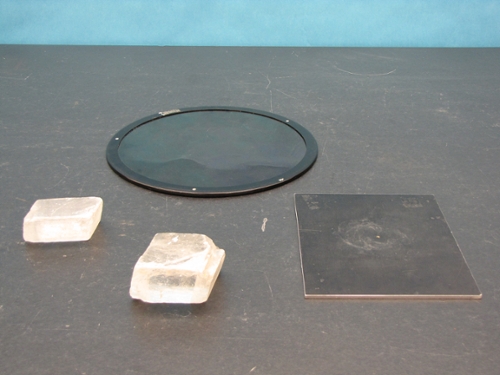Demos: 7B-24 Double Refraction

Directions: Dim the room lights. A black metal plate has a small hole at its center. Place this plate on the overhead and focus the image of the hole on the screen. Then place the calcite crystal over the hole. Rotate the crystal to show the movement of one of the images relative to the other. Interpose an analyzer in the beam to show that it is polarized.
Place a second calcite crystal on top of the first and slowly rotate it to show the different images.
Suggestions for Presentation: Discuss with the class the phenomenon of double refraction and indicate what should happen if a beam of light passes through such a crystal.
Applications:
Last Updated: Nov 30, 2023 11:25 AM